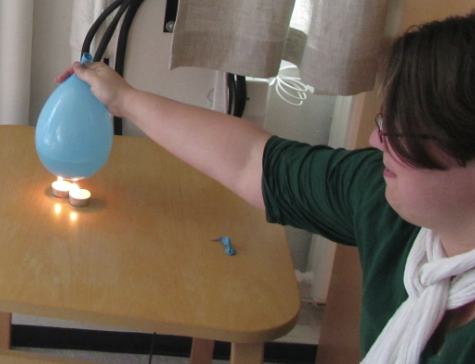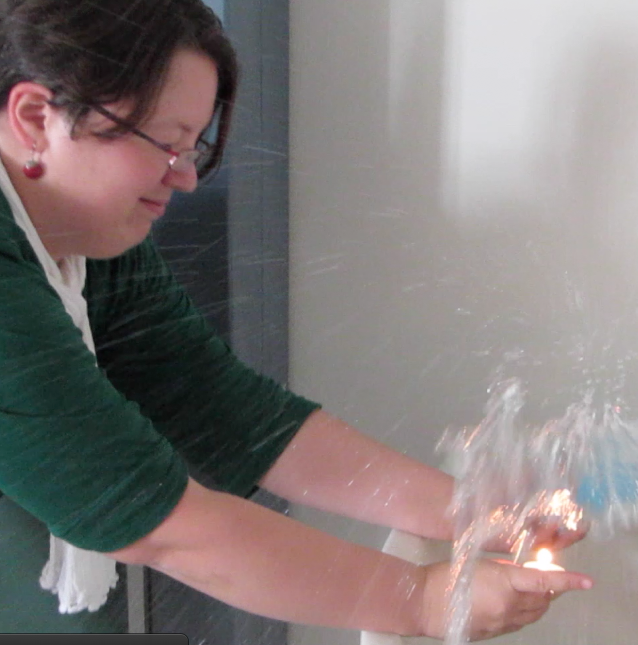Hands-on activity to better understand the concept and consequences of heat capacity. Also a great party trick.
Imagine you take a balloon. Any kind of normal balloon. You blow it up. You hold it over a candle flame. What do you think will happen?
Yes – it will burst pretty instantly.
Now imagine you are taking a new balloon. You fill it with water (or, in our case, you fill it about half with water and half with air). You hold it over the flame. What will happen now?
You wait.
And wait.
And wait.

Balloon, filled with water, being heated above a candle. Note the remnants of the previous balloon (the one that was just filled with air) on the table.
You even take a second candle.
You wait some more.
What happens? Nothing.
And why not? Because water has a much higher heat capacity than air. Meaning you have to put a lot of energy into a small volume of water to warm it up, about 4 times more than you would have to add to a similar volume of air. So the balloon does not get hot quickly, hence the plastic doesn’t get weakened enough for the balloon to burst. In fact, it did not only not get hot quickly, it did not get hot enough at all within the attention span of a typical student or instructor. So, because my students asked nicely, I decided to demonstrate what happens when the balloon is half filled with water, but the flame is directed to an area of the balloon that is not in direct contact with the water. If you can’t imagine what happens, check it out here (if you CAN imagine what happens, I’m sure you will check it out, too…).
